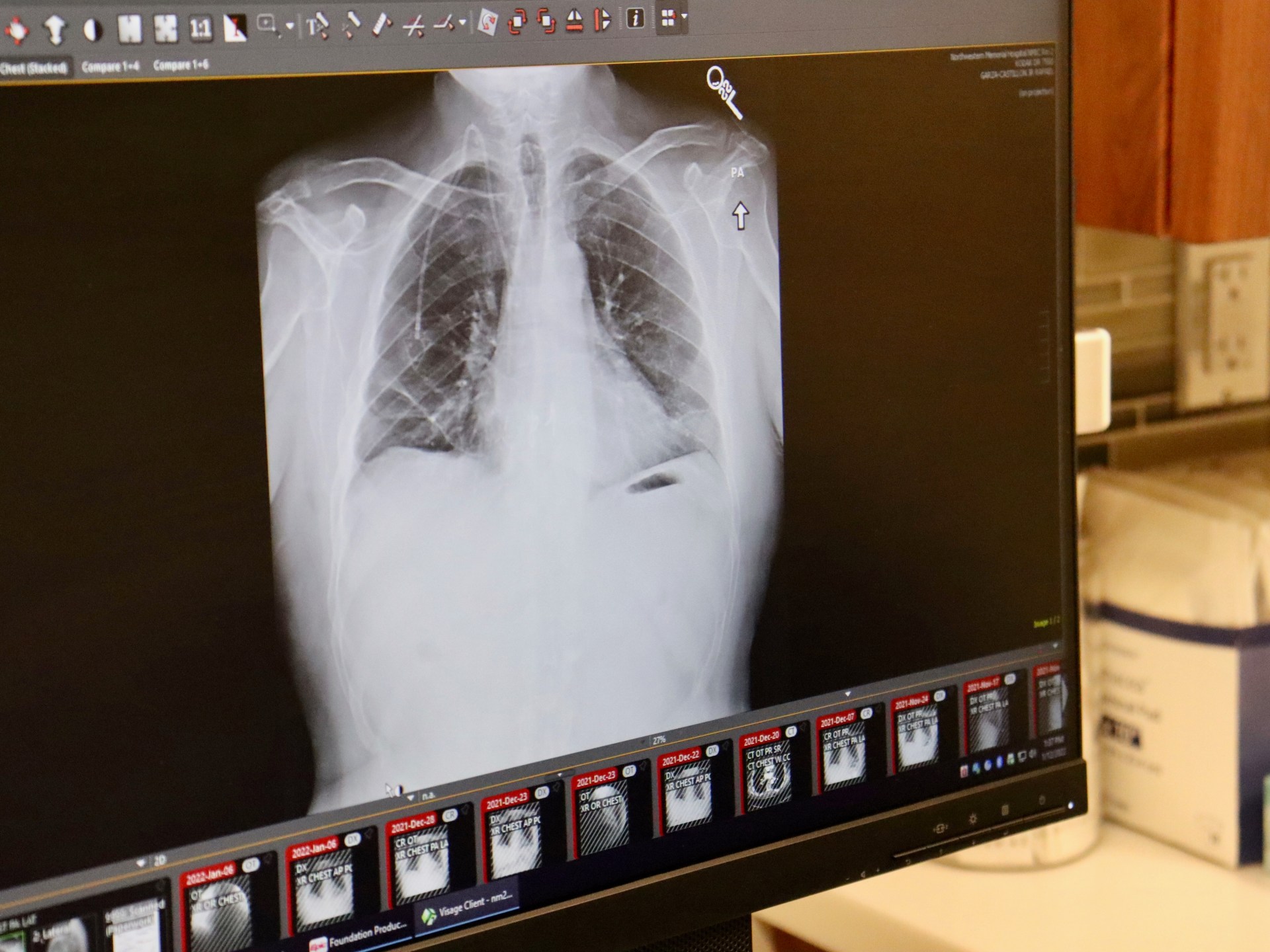About a million people aged below 50 die of cancer annually, a study says, projecting another 21 percent rise by 2030.
I think a lot of it is increase in diagnostic capabilities.
Ah yes, the significantly higher diagnostic capabilities of death by cancer
This article kind of made a mess of the numbers. At one point it suggests the mortality rate increased, but that’s not what the actual research shows.
From OG article: “Our study showed that the global morbidity of early-onset cancer increased from 1990 to 2019, while mortality and DALYs slightly decreased”
https://bmjoncology.bmj.com/content/2/1/e000049
The vast majority of the raw numbers increasing is because of the word population going from 5.3 billion to 7.75 billion in that same time. The next cause does seem to be diagnostic ability, especially when looking at what cancers saw the biggest increase.
So, correct me if I’m wrong, but the actual number when speaking relative to population growth would be:
180% / (7.75 Billion / 5.3 Billion) = 123.1%
So it’s actually only a 23% increase, relatively.
This article is so misleading.
Yeah. The unfortunate truth about science news reporting is that usually it’s not sensational, so they need to play things up for clicks and ad revenue. A lot of the time it ends up in somewhat misleading semi-truths like this.
That’s correct.
?
I think the argument they’re making is that detecting that a death is caused by cancer is probably not an advanced affair requiring new diagnostic technology.
Personally, I think it’s an interesting question, given that it stands to reason that cancer, by the time it has caused death, should be pretty easily detectable in any sort of autopsy.
A post-mortem is not what most people think of when talking about cancer diagnostics.
Well, the article refers to both :)
I think you’d be right about the “number of diagnoses” statement in the title, but I think the discussion is about the deaths due to cancer, which have also increased and would not have as strong of a correlation for the reasons others mentioned
But that’s directly related. People used to die when “catching a cold”. We call that lung cancer nowadays. Same thing with many other branches of cancer.
How many people are getting autopsies in rural Afghanistan or India?
Even in the US, autopsies are not always performed. Ima quote WebMD because I’m bone idle:
Although laws vary, nearly all states call for an autopsy when someone dies in a suspicious, unusual, or unnatural way.
Many states have one done when a person dies without a doctor present. Twenty-seven states require it if the cause of death is suspected to be from a public health threat, such as a fast-spreading disease or tainted food.
According to a 2012 DOJ report, only 8.5% of US deaths result in autopsy.
I mean sure. But the data is likely comparative and can be looked at just within countries that have been getting autopsies since the 90s.
And what is the stat in those countries?
A lot blaming pfas and microplastics, but obesity is up too. According to the cdc that increases risk significantly in 13 types of cancer. Of course now looking up some are linking pfas to weight gain so maybe you guys are right!
There needs to be a lot more studies on obesity and why it’s gone up so much. I don’t buy the “more sedentary lifestyle” argument. Our mobility hasn’t changed THAT much in the last 50 years, at least not enough to explain the absolutely skyrocketing cases of obesity.
There’s a big link between poverty and obesity. People in poverty tend to be more active due to more physically demanding jobs, so it feels like the cause has to be from cheap food. While a lot of people might immediately look to high fructose corn syrup, I’m not sure it’s that simple. Obesity rates are rising even in places that don’t use HFCS in everything. I wouldn’t be surprised if there was some additive or preservative that started to get heavily used in the last few decades that’s had horrible, unintended consequences.
Additives or preservatives aren’t likely to be the core issue. At the end of the day, by far the most significant factor for weight change is calorie intake vs expenditure. The new drugs like Semaglutide fundamentally work by significantly suppressing hunger and increasing satiety, for instance. I’m not sure what the precise data looks like, but in general, people are less social, go out less, spend a lot more time sitting on their phones or computers, and are generally a bit more stressed. All of the is going to contribute to eating more and moving less.
Powerty affects more than just the quality of food you can afford. Sleep, stress, and health care for example would also be mayor factors for struggling with obesity.
In general, obesity is not one single disease but more a compound end result from a ton of different factors, so there are lot of different causes and life situations that lead people to struggling with obesity.
Many also work night shift which increases likelihood for all those factors.
There’s also a big link between lack of sleep and both obesity and cancer (and dozens of other health problems).
Western society has glorified not getting enough sleep as though it makes you manlier or better in some way. It doesn’t. It just makes you die sooner.
We’ve moved to an “always on” society with the proliferation of the internet. With this comes disrupted circadian rhythms and even more reasons/excuses to not follow a regular or beneficial sleep schedule.
Sugar and refined carbohydrates are two big culprits. Then changing the balance of HDL-cholesterol to LDL-cholesterol changes with weight gain making it all worse and possibly leading to a positive feedback loop. The historic denigration of all fats, good and bad, helped to further tilt the HDL to LDL in the population making lots of people less healthy. It isn’t HFCS, it is the over use of sugar in most of our food. This is especially true in North America, but then we exported much of the same food tech to the rest of the world who did the same.
All that processed food? Full of refined carbs and sugar. Drinks? Often full of sugar. Cheap food? Usually highly processed and refined, so more sugar and refined carbs. You need carbs for energy and fats to keep everything going with balance of nutrients and protein. Any of that out of balance and health suffers. Too little fat can even kill you (rabbit starvation/protein poisoning). The modern diet in North America is terrible because we were told good things were bad and carbs were good. So we ate too little of the good fats, too much of the refined carbs, and too much sugar. Now were here, increased heat disease, diabetes, obesity, and cancer.
Pfas and micro plastics cause hormonal issues that can result in weight problems.
https://www.niehs.nih.gov/health/topics/agents/endocrine/index.cfm
And obesity is only going to increase since all the grocery overlords have jacked the costs of everything through the roof while their prepackaged boxes of sodium and fat mush seem to be the new staple for everyone.
Don’t forget sugar. I’ve recently visited the US and their bread (if you can call it that) could easily be classified as cake where I’m from.
https://globalnews.ca/news/7371355/subway-bread-sugar-ireland/
I stopped eating breads tbh…they are just horrid for you.
deleted by creator
Plastics, PFAS, pesticides, chemicals, radiations, all is contaminated not only what you eat but also what you breath. What a surprise !
Between cancer and Alzheimer’s getting old sucks.
It sucks even if you don’t get particularly sick.
Still beats the alternative but it can certainly be difficult at times.
A lot of these people were exposed to unregulated toxic shit in their youth
Its the plastic blood
Probably a range of synthetic chemicals we’ve been polluting the natural world with for the last century, especially over the last few decades.
I always wanted to be stretch Armstrong.
Is there actual data on this? Microplastics aren’t exactly new.
I only read the headline and not the article, so I’m not sure if this was mentioned. Would the main cause be from melanoma caused by UV? Melanoma rates in Australia went through the roof when we had that big ozone hole above our country.
The main suspected causes mentioned are poor diet, alcohol, tobacco, physical inactivity, and obesity
well shit.
Plus side, these are factors that can be managed!
Even if it’s not exactly fun to.
Ah yes. Blame poor people instead of the corporations polluting our natural world. Typical.
Well, if that’s what the medical data actually points to, while I don’t think blame is really a useful concept, that would be the correct conclusion.
I don’t know if that’s actually the case, because I’m not a doctor, but I’ll listen to them if they say it is.
This is COVID denial style talk.
The report is actual medical research.
What did you read that made you think “This is blaming poor people!”?
If I had to guess, it’s probably because poor people are more likely to engage in self-destructive behavior for instant gratification because they have nothing to look forward to in life.
Poor diet, alcohol abuse, and tobacco use can all certainly be attributed to corporate malfeasance in at least some part.
Removed by mod
I see your point, but rich people regularly engage in these things all the time.
I guess they also get to balance it with plenty of outside time on the beach and delicious meals cooked by professional chefs.
Seed oil consumpion…
Its in everything now
And its not real food
Not real food seems like an arbitrary label?
You think the reason cancer is climbing is because of seed oil? Facepalm.
What I would give for every ‘muh seed oils bruh’ person to actually supply evidence.
Tritium currently being dumped into the ocean in Japan but dont worry your bones can tell the difference between that and calcium no problem
The fun thing is that your body can tell the difference between hydrogen isotopes and calcium.
Kids with thyroid cancer obviously just got that from bad hydrogen molecules lol.
The deterministic effects are health effects that displayed symptoms due to the killing of tissue stem cells in those exposed to ionizing radiation at more than threshold doses for tissue reactions. The threshold dose for tissue reactions is defined as a dose to induce tissue injury at the level of 1% incidence [7]. Typical early effects resulting in symptoms appearing over several weeks after exposure to ionizing radiation, are acomia and permanent infertility, as well as skin lesions and hematopoietic disorders. Cataracts are a typical late effect with symptoms arising after a long latent period extending to decades after exposure to ionizing radiation. The threshold doses for acomia, permanent infertility and cataracts are 3, 2.5–6, and 0.5 Gy delivered to the whole body, respectively. When pregnant women are exposed to ionizing radiation, embryonic death and malformation are the deterministic effects, which are provoked in fetuses. The threshold doses for both are 0.1 Gy as whole body exposure dose (0.1 Sv, here, the sievert [Sv] is a unit of radiation dose used for radiation protection to assess the health risk on humans), which is the minimal threshold dose among the various deterministic effects. On the other hand, the stochastic effects are health effects displayed stochastically by accumulating DNA mutations in cells of the tissues exposed to ionizing radiation. Typical stochastic effects are solid cancer and leukemia. Therefore, health effects provoked by ionizing radiation at below 0.1 Gy as a whole body exposure dose (0.1 Sv) are only the stochastic effects. There is still no evidence, however, for the stochastic effects provoked by whole body exposure to ionizing radiation of less than 0.1 Gy (0.1 Sv).
You will have factors more dangerous levels of radiation if you spend much time in the sun.
Interesting there are cities in the US that have background levels of natural radiation, levels higher than that allowed at nuclear plants. Check out places in Colorado. Yet they have cancer rates no higher than the national average. Some lower.
The ocean alone has enough natural radiation that if we mined it out of the water, it could power the world for thousands of years. And actually there are ways to mine it for about 10c a kwh. That is economical but far higher than land based mining at about 2c per kwh thus no point in doing so.
That is a pretty good source. Indicated nearly zero risk. Likely one of the best explications but very technical.
Unless you ingest. Then the risk goes up exponentially. Hence the global concern about dumping tritium.
This comment comes across as horrible misinformed. If you want to make an argument for tritium being dangerous even at very low concentrations, make that argument. But tritium has nothing to do with calcium, and releasing low concentration tritium from nuclear power plants has been standard procedure for as long as we’ve had nuclear power plants. It’s not unique to Fukushima. France dumps more Tritium in a year than Fukushima will ever dump.
Nuclear fearmongering on my internet? Surely not! /s
Who control what is released from the tanks ?
Watched the Kyle Hill video?
You’re information is hilariously incorrect.
Which information? Be very specific.
The deterministic effects are health effects that displayed symptoms due to the killing of tissue stem cells in those exposed to ionizing radiation at more than threshold doses for tissue reactions. The threshold dose for tissue reactions is defined as a dose to induce tissue injury at the level of 1% incidence [7]. Typical early effects resulting in symptoms appearing over several weeks after exposure to ionizing radiation, are acomia and permanent infertility, as well as skin lesions and hematopoietic disorders. Cataracts are a typical late effect with symptoms arising after a long latent period extending to decades after exposure to ionizing radiation. The threshold doses for acomia, permanent infertility and cataracts are 3, 2.5–6, and 0.5 Gy delivered to the whole body, respectively. When pregnant women are exposed to ionizing radiation, embryonic death and malformation are the deterministic effects, which are provoked in fetuses. The threshold doses for both are 0.1 Gy as whole body exposure dose (0.1 Sv, here, the sievert [Sv] is a unit of radiation dose used for radiation protection to assess the health risk on humans), which is the minimal threshold dose among the various deterministic effects. On the other hand, the stochastic effects are health effects displayed stochastically by accumulating DNA mutations in cells of the tissues exposed to ionizing radiation. Typical stochastic effects are solid cancer and leukemia. Therefore, health effects provoked by ionizing radiation at below 0.1 Gy as a whole body exposure dose (0.1 Sv) are only the stochastic effects. There is still no evidence, however, for the stochastic effects provoked by whole body exposure to ionizing radiation of less than 0.1 Gy (0.1 Sv).
Did you even read the dose levels needed to be dangerous? Your source explains why there is near zero danger.
If you ingest tritium the odds of cancer increase, thats the science. But thanks for the condescending attitude you’re obviously very smart.
If you go outside your chances of cancer increase. If you fly your chances of cancer increase. If you drink water or eat a burger your chances of cancer increases. Don’t be pandemic. Your source actually shows how much you are exaggerating the risk as it is far lower to nil.
The deterministic effects are health effects that displayed symptoms due to the killing of tissue stem cells in those exposed to ionizing radiation at more than threshold doses for tissue reactions. The threshold dose for tissue reactions is defined as a dose to induce tissue injury at the level of 1% incidence [7]. Typical early effects resulting in symptoms appearing over several weeks after exposure to ionizing radiation, are acomia and permanent infertility, as well as skin lesions and hematopoietic disorders. Cataracts are a typical late effect with symptoms arising after a long latent period extending to decades after exposure to ionizing radiation. The threshold doses for acomia, permanent infertility and cataracts are 3, 2.5–6, and 0.5 Gy delivered to the whole body, respectively. When pregnant women are exposed to ionizing radiation, embryonic death and malformation are the deterministic effects, which are provoked in fetuses. The threshold doses for both are 0.1 Gy as whole body exposure dose (0.1 Sv, here, the sievert [Sv] is a unit of radiation dose used for radiation protection to assess the health risk on humans), which is the minimal threshold dose among the various deterministic effects. On the other hand, the stochastic effects are health effects displayed stochastically by accumulating DNA mutations in cells of the tissues exposed to ionizing radiation. Typical stochastic effects are solid cancer and leukemia. Therefore, health effects provoked by ionizing radiation at below 0.1 Gy as a whole body exposure dose (0.1 Sv) are only the stochastic effects. There is still no evidence, however, for the stochastic effects provoked by whole body exposure to ionizing radiation of less than 0.1 Gy (0.1 Sv).















